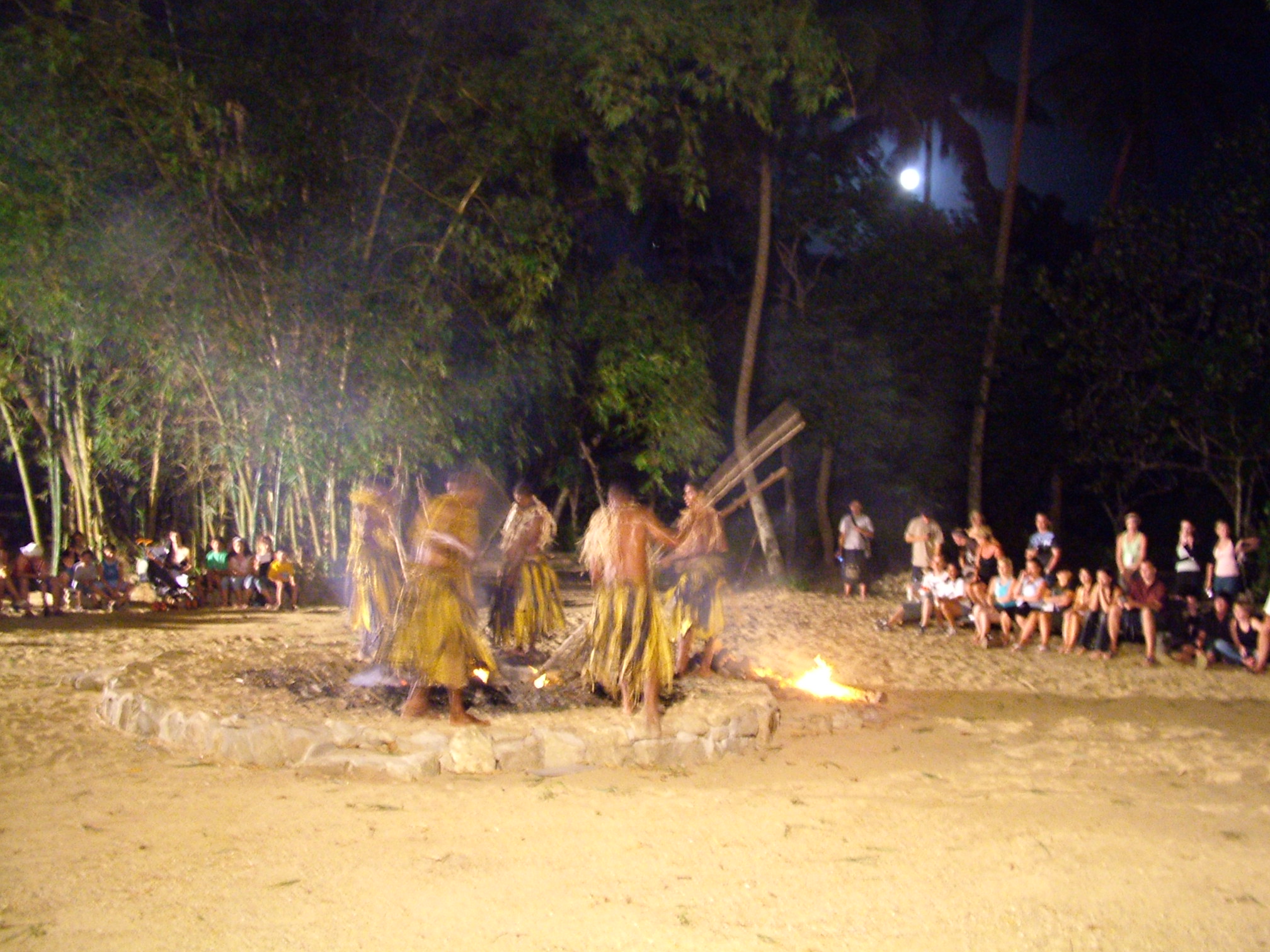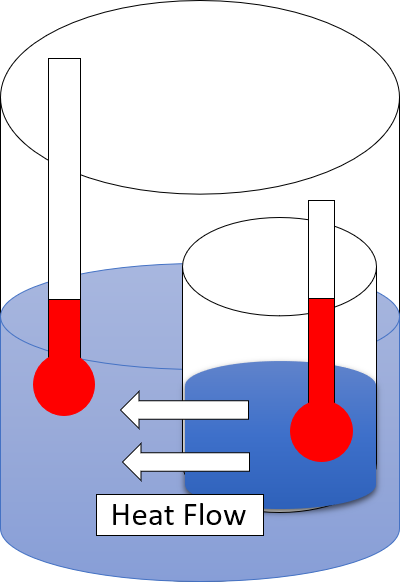|
Fire-walking
Firewalking is the act of walking barefoot over a bed of hot embers or stones. It has been practiced by many people and cultures in many parts of the world, with the earliest known reference dating from Iron Age India . It is often used as a rite of passage, as a test of strength and courage, and in religion as a test of faith. Modern physics has explained the phenomenon, concluding that the foot does not touch the hot surface long enough to burn and that embers are poor conductors of heat. History Walking on fire has existed for several thousand years, with records dating back to 1200 BCE. (livescience.com) Cultures across the globe use firewalking for rites of healing, initiation, and faith. Firewalking is also practiced by: * The Sawau clan on the island of Beqa, to the south of Viti Levu in the Fijian Islands. The phenomenon was examined in 1902 when it was already a tourist attraction, with a "Probable Explanation of the Mystery" arrived at. * San Pedro Manrique, a vill ... [...More Info...] [...Related Items...] OR: [Wikipedia] [Google] [Baidu] |
San Pedro Manrique
San Pedro Manrique is a municipality in the province of Soria, Castile and León, Spain. , it had 626 inhabitants. Since the mid-nineteenth century this municipality has aggregated smaller villages. There is a deposit of lead in the municipality. Villages * Acrijos * Armejún * Buimanco * Fuentebella *Vea * Peñazcurna * Valdemoro de San Pedro Manrique * Villarijo * Matasejún * Valdelavilla *Santiago * Valdenegrillos * El Vallejo * Taniñe * Las Fuentes de San Pedro * Ventosa de San Pedro * Palacios Gallery File:SAN PEDRO MANRIQUE-01.jpg, San Pedro Manrique File:SAN PEDRO MANRIQUE-09-San Miguel (sXIII).jpg, Ruins of the Romanesque church of San Miguel (13th century) File:SAN PEDRO MANRIQUE-02-San Martín de Tours (sXII).jpg, The Romanesque church of San Martín de Tours (12th century) File:SAN PEDRO MANRIQUE-08.jpg, Ermita de la Virgen de la Peña (13th century) File:SAN PEDRO MANRIQUE-06.jpg, Rural architecture of the area File:SAN PEDRO MANRIQUE-03.jpg, The town center ... [...More Info...] [...Related Items...] OR: [Wikipedia] [Google] [Baidu] |
Beqa
Beqa (, also known as Mbengga in English) is an island in Fiji, an outlier to the main island of Viti Levu, to the south. The island has a land area of and reaches a maximum elevation of . Beqa has 9 villages divided between 2 ''tikinas'' (districts): Sawau and Raviravi. To the west is the island of Yanuca. The villages of Dakuibeqa (the chiefly village of the Sawau people), Dakuni, Soliyaga, Naceva and Naiseuseu are part of the ''tikina'' (district) of Sawau. The villages of Nawaisomo, Raviravi, Lalati and Rukua are part of the ''tikina'' (district) of Raviravi. Tradition Of the 9 villages on the island, Dakuibeqa, Dakuni, Soliyaga, Naceva, and Rukua are noted for the tradition of fire-walking. The phenomenon was examined in 1902 when it was already a tourist attraction, with a "Probable Explanation of the Mystery" arrived at. Energy The ''Fiji Times'' reported on 25 February 2006 that over 3000 inhabitants of six villages and five resorts were exploring ways to find ... [...More Info...] [...Related Items...] OR: [Wikipedia] [Google] [Baidu] |
Anastenaria
The Anastenaria (, ) is a traditional barefoot firewalking ritual with ecstatic dance performed in some villages in Northern Greece and Southern Bulgaria. The communities which celebrate this ritual are descended from refugees who entered Greece from Eastern Thrace following the Balkan Wars of 1911–12 and the Population exchange between Greece and Turkey in 1923. Ritual cycle The Bulgarian and Greek villages perform a unique annual ritual cycle, which begins on May 21 and ends on May 23 every year. The central figures of the tradition are Saint Constantine and Saint Helen, but all the significant days in this cycle coincide with important days in the Greek Orthodox calendar and are related to various Christian saints. The two major events in this cycle are two big festivals, one in January and particularly one in May, dedicated to these two saints. Each of the festivals lasts for three days and involves various processions, music and dancing, and an animal sacrifice. The fest ... [...More Info...] [...Related Items...] OR: [Wikipedia] [Google] [Baidu] |
Nestinarstvo
The Anastenaria (, ) is a traditional barefoot firewalking ritual with ecstatic dance performed in some villages in Northern Greece and Southern Bulgaria. The communities which celebrate this ritual are descended from refugees who entered Greece from Eastern Thrace following the Balkan Wars of 1911–12 and the Population exchange between Greece and Turkey in 1923. Ritual cycle The Bulgarian and Greek villages perform a unique annual ritual cycle, which begins on May 21 and ends on May 23 every year. The central figures of the tradition are Saint Constantine and Saint Helen, but all the significant days in this cycle coincide with important days in the Greek Orthodox calendar and are related to various Christian saints. The two major events in this cycle are two big festivals, one in January and particularly one in May, dedicated to these two saints. Each of the festivals lasts for three days and involves various processions, music and dancing, and an animal sacrifice. The ... [...More Info...] [...Related Items...] OR: [Wikipedia] [Google] [Baidu] |
Fire Walking (1234969885)
Fire is the rapid oxidation of a fuel in the exothermic chemical process of combustion, releasing heat, light, and various reaction products. Flames, the most visible portion of the fire, are produced in the combustion reaction when the fuel reaches its ignition point temperature. Flames from hydrocarbon fuels consist primarily of carbon dioxide, water vapor, oxygen, and nitrogen. If hot enough, the gases may become ionized to produce plasma. The color and intensity of the flame depend on the type of fuel and composition of the surrounding gases. Fire, in its most common form, has the potential to result in conflagration, which can lead to permanent physical damage. It directly impacts land-based ecological systems worldwide. The positive effects of fire include stimulating plant growth and maintaining ecological balance. Its negative effects include hazards to life and property, atmospheric pollution, and water contamination. When fire removes protective vegetation, heavy r ... [...More Info...] [...Related Items...] OR: [Wikipedia] [Google] [Baidu] |
Thermal Effusivity
In thermodynamics, a material's thermal effusivity, also known as thermal responsivity, is a measure of its ability to exchange energy with its surroundings. It is an intensive quantity defined as the square root of the product of the material's thermal conductivity (\lambda) and its volumetric heat capacity (\rho c_p) or as the ratio of thermal conductivity to the square root of thermal diffusivity (\alpha). :r = \frac=\sqrt. Some authors use the symbol e to denote the thermal responsivity, although its usage along with an exponential becomes difficult. The SI units for thermal effusivity are \sqrt / () or, equivalently, / ( \sqrt). Thermal effusivity can also be a measure of a solid or rigid material's '' thermal inertia''. Thermal effusivity is a parameter that emerges upon applying solutions of the heat equation to heat flow through a thin surface-like region. It becomes particularly useful when the region is selected adjacent to a material's actual surface. Knowing t ... [...More Info...] [...Related Items...] OR: [Wikipedia] [Google] [Baidu] |
Thermal Conductivity
The thermal conductivity of a material is a measure of its ability to heat conduction, conduct heat. It is commonly denoted by k, \lambda, or \kappa and is measured in W·m−1·K−1. Heat transfer occurs at a lower rate in materials of low thermal conductivity than in materials of high thermal conductivity. For instance, metals typically have high thermal conductivity and are very efficient at conducting heat, while the opposite is true for insulating materials such as mineral wool or Styrofoam. Metals have this high thermal conductivity due to free electrons facilitating heat transfer. Correspondingly, materials of high thermal conductivity are widely used in heat sink applications, and materials of low thermal conductivity are used as thermal insulation. The reciprocal of thermal conductivity is called thermal resistivity. The defining equation for thermal conductivity is \mathbf = - k \nabla T, where \mathbf is the heat flux, k is the thermal conductivity, and \nabla ... [...More Info...] [...Related Items...] OR: [Wikipedia] [Google] [Baidu] |
Specific Heat Capacity
In thermodynamics, the specific heat capacity (symbol ) of a substance is the amount of heat that must be added to one unit of mass of the substance in order to cause an increase of one unit in temperature. It is also referred to as massic heat capacity or as the specific heat. More formally it is the heat capacity of a sample of the substance divided by the mass of the sample. The SI unit of specific heat capacity is joule per kelvin per kilogram, J⋅kg−1⋅K−1. For example, the heat required to raise the temperature of of water by is , so the specific heat capacity of water is . Specific heat capacity often varies with temperature, and is different for each state of matter. Liquid water has one of the highest specific heat capacities among common substances, about at 20 °C; but that of ice, just below 0 °C, is only . The specific heat capacities of iron, granite, and hydrogen gas are about 449 J⋅kg−1⋅K−1, 790 J⋅kg−1⋅K−1, and 143 ... [...More Info...] [...Related Items...] OR: [Wikipedia] [Google] [Baidu] |
Density
Density (volumetric mass density or specific mass) is the ratio of a substance's mass to its volume. The symbol most often used for density is ''ρ'' (the lower case Greek letter rho), although the Latin letter ''D'' (or ''d'') can also be used: \rho = \frac, where ''ρ'' is the density, ''m'' is the mass, and ''V'' is the volume. In some cases (for instance, in the United States oil and gas industry), density is loosely defined as its weight per unit volume, although this is scientifically inaccurate this quantity is more specifically called specific weight. For a pure substance, the density is equal to its mass concentration. Different materials usually have different densities, and density may be relevant to buoyancy, purity and packaging. Osmium is the densest known element at standard conditions for temperature and pressure. To simplify comparisons of density across different systems of units, it is sometimes replaced by the dimensionless quantity "relative den ... [...More Info...] [...Related Items...] OR: [Wikipedia] [Google] [Baidu] |
Temperature
Temperature is a physical quantity that quantitatively expresses the attribute of hotness or coldness. Temperature is measurement, measured with a thermometer. It reflects the average kinetic energy of the vibrating and colliding atoms making up a substance. Thermometers are calibrated in various temperature scales that historically have relied on various reference points and thermometric substances for definition. The most common scales are the Celsius scale with the unit symbol °C (formerly called ''centigrade''), the Fahrenheit scale (°F), and the Kelvin scale (K), with the third being used predominantly for scientific purposes. The kelvin is one of the seven base units in the International System of Units (SI). Absolute zero, i.e., zero kelvin or −273.15 °C, is the lowest point in the thermodynamic temperature scale. Experimentally, it can be approached very closely but not actually reached, as recognized in the third law of thermodynamics. It would be impossible ... [...More Info...] [...Related Items...] OR: [Wikipedia] [Google] [Baidu] |
The Straight Dope
''The Straight Dope'' was a question-and-answer newspaper column written under the pseudonym Cecil Adams. Contributions were made by multiple authors, and it was illustrated (also pseudonymously) by Slug Signorino. It was first published in 1973 in the ''Chicago Reader'' as well as in print syndication nationally in the United States, and on a website with the same name. The final column was printed on June 27, 2018, including a statement that it was only being placed on hiatus, though the column has not returned. Name and tagline The column derives its name from the American idiom meaning roughly "the true information; the full story" and covers many subjects, including history, science, old wives' tales, urban legends, and inventions. The column appeared under the tagline In entertainment, a tagline (alternatively spelled tag line) is a short text which serves to clarify a thought for, or is designed with a form of, dramatic effect. Many tagline slogans are reiterated ... [...More Info...] [...Related Items...] OR: [Wikipedia] [Google] [Baidu] |
Second Law Of Thermodynamics
The second law of thermodynamics is a physical law based on Universal (metaphysics), universal empirical observation concerning heat and Energy transformation, energy interconversions. A simple statement of the law is that heat always flows spontaneously from hotter to colder regions of matter (or 'downhill' in terms of the temperature gradient). Another statement is: "Not all heat can be converted into Work (thermodynamics), work in a cyclic process."Young, H. D; Freedman, R. A. (2004). ''University Physics'', 11th edition. Pearson. p. 764. The second law of thermodynamics establishes the concept of entropy as a physical property of a thermodynamic system. It predicts whether processes are forbidden despite obeying the requirement of conservation of energy as expressed in the first law of thermodynamics and provides necessary criteria for spontaneous processes. For example, the first law allows the process of a cup falling off a table and breaking on the floor, as well as allowi ... [...More Info...] [...Related Items...] OR: [Wikipedia] [Google] [Baidu] |






